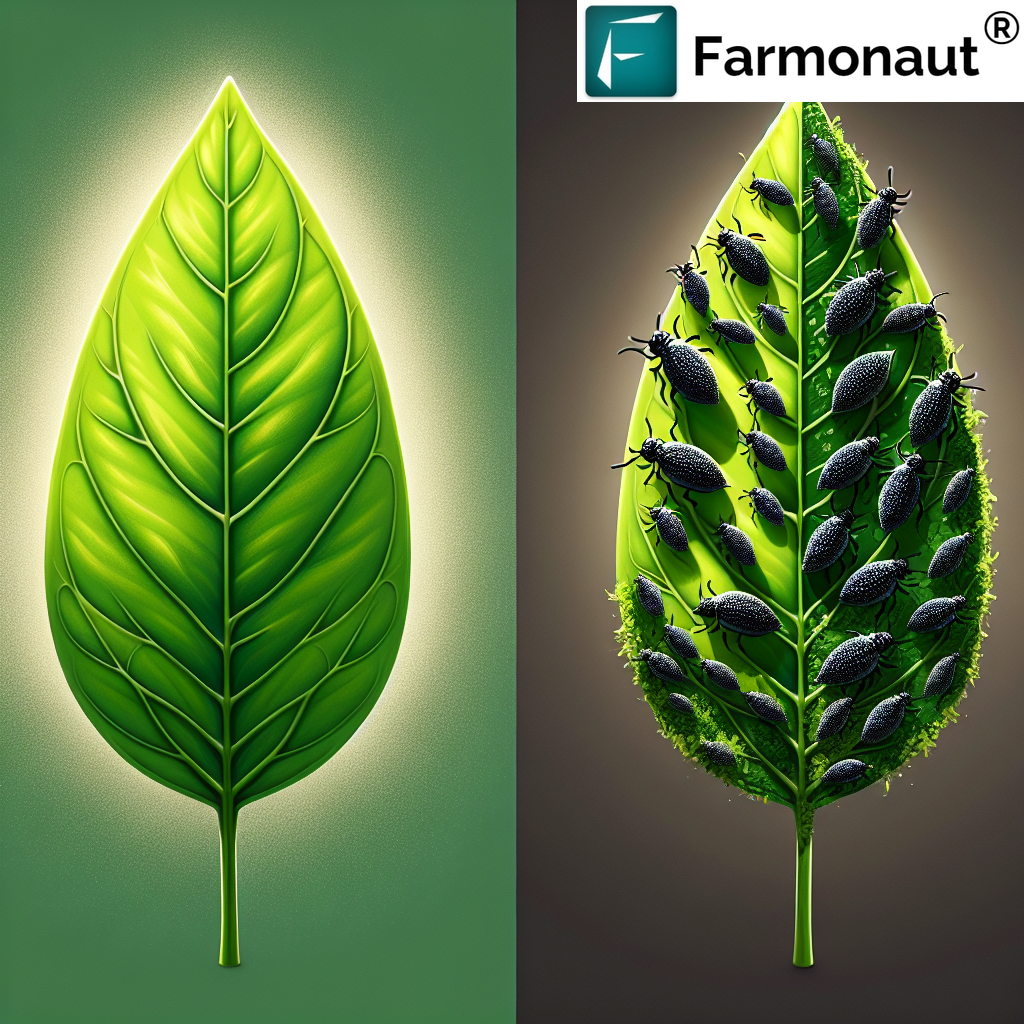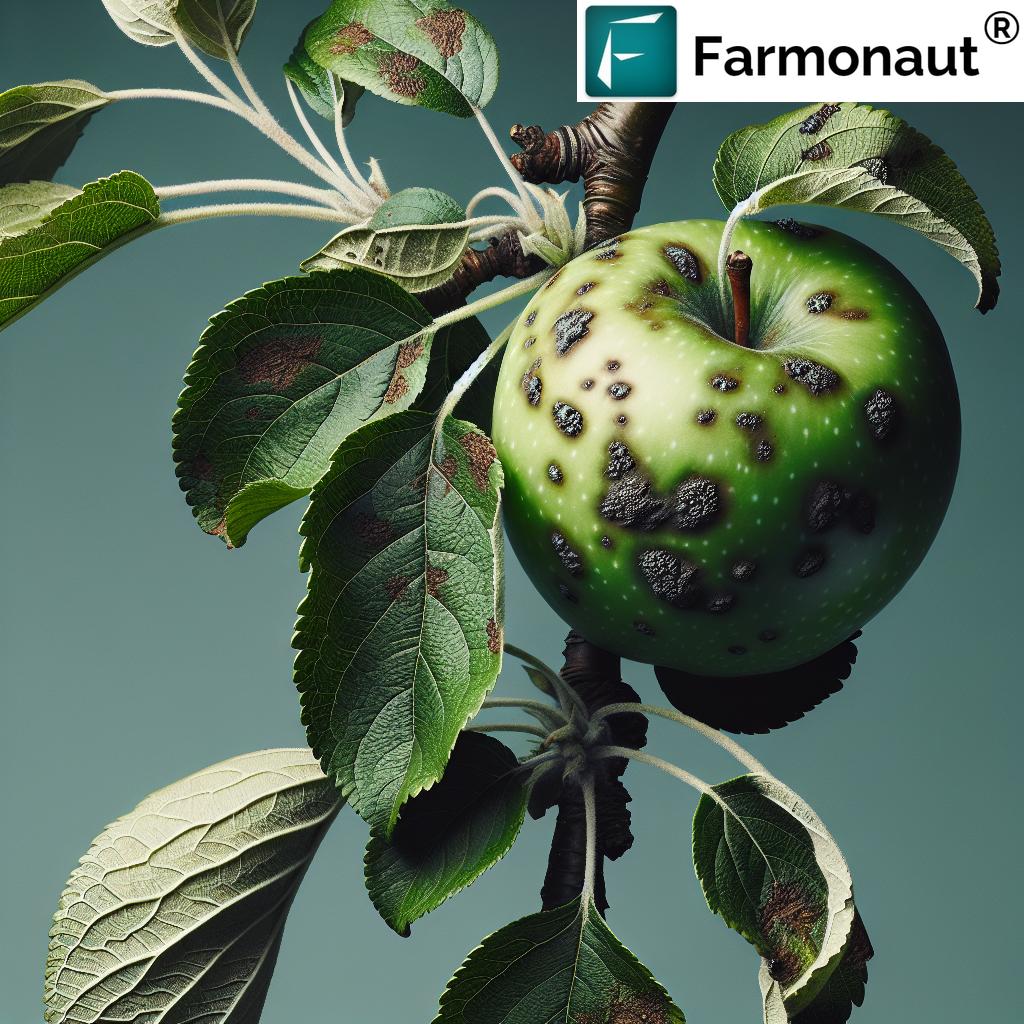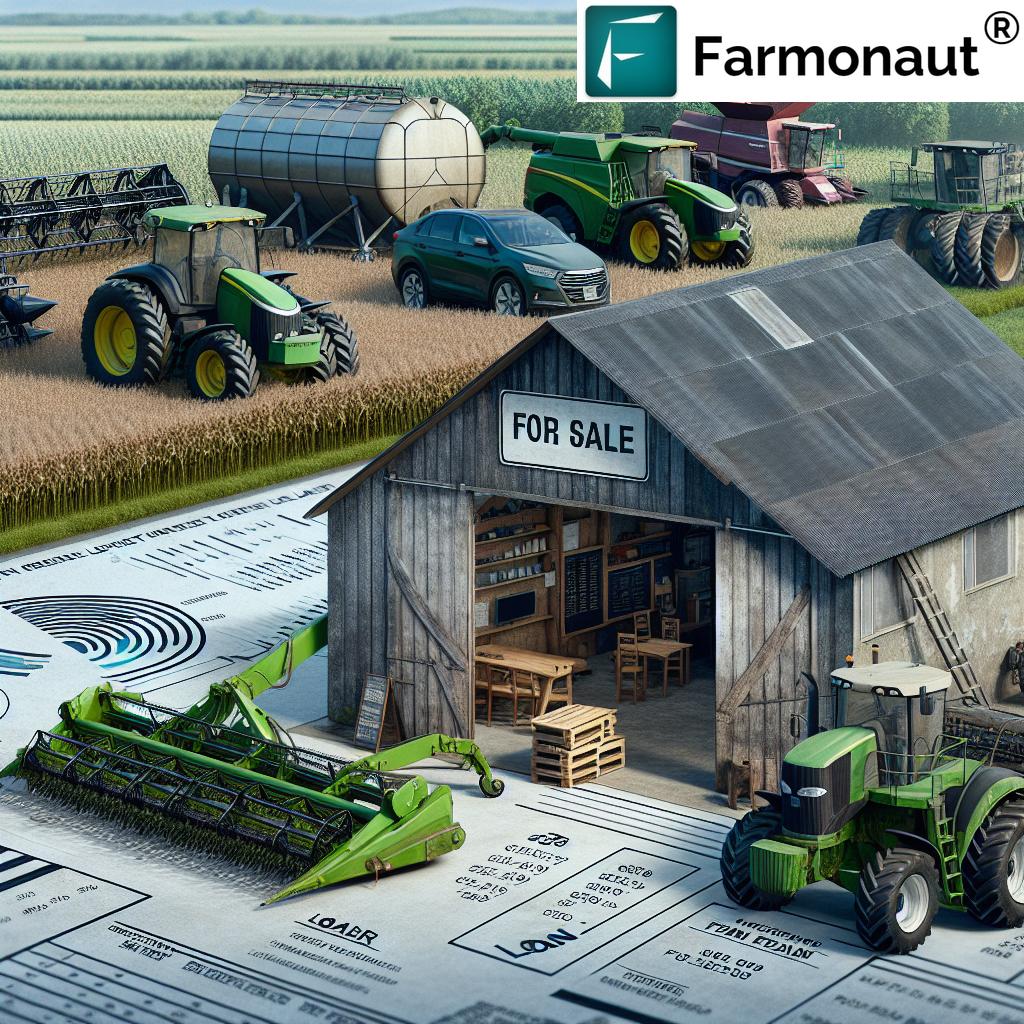Topiary Trees, Boxwood Topiary & Tropical Trees in Agriculture: Transforming Sustainable Farms, Honey Production & Landscape Design in 2025
“Nearly 40% of sustainable farms in 2025 use boxwood topiary to enhance biodiversity and pest control.”
Table of Contents
- Introduction: Topiary Trees, Boxwood Topiary & Tropical Trees in Modern Agriculture
- History, Principles & Horticultural Skill of Topiary
- Boxwood Topiary: Essential Benefits & Roles in 2025 Agriculture
- Integration of Topiary Trees and Boxwood Topiary in Agroforestry Systems
- Tropical Trees, Apiary Honey & Beekeeping: Synergy for Sustainable Productivity
- Forestry, Topiary, and Climate-Resilient Infrastructure in 2026+
- Comparative Benefits Table: Topiary Trees, Boxwood Topiary & Tropical Trees
- How We at Farmonaut Empower Modern Agroforestry & Resource Management
- Future Outlook, Challenges, and Innovations on the Horizon
- Frequently Asked Questions on Topiary Trees, Boxwood Topiary & Tropical Trees
- Conclusion: Topiary Trees and Boxwood Topiary – Modern, Sustainable, Resilient
Introduction: Topiary Trees, Boxwood Topiary & Tropical Trees in Modern Agriculture
In the evolving landscape of agriculture topics for 2025 and beyond, three plant categories are drawing renewed attention: topiary trees, boxwood topiary, and tropical trees. Traditionally symbols of refined ornamental horticultural skill, these trees and shrubs are demonstrating far more than aesthetic appeal. They are fast becoming valuable contributors to sustainable agriculture, agroforestry, apiary honey production, and resilient climate-smart landscape infrastructures.
As global agriculture ecosystems adapt to shifting climate realities, farmers, growers, and land managers are increasingly turning to shaped, pruned, and precisely managed trees for benefits spanning carbon sequestration, blockchain-powered traceability, enhanced ecological services, biodiversity enrichment, and diversified income streams.
This blog explores the multiple roles, benefits, integration strategies, and future potential of topiary trees, particularly focusing on boxwood topiary and their synergy with tropical trees in sustainable agriculture systems for 2026 and beyond.
Focus Keyword Placement: From the outset, topiary trees, boxwood topiary, apiary honey, tropical trees, and agriculture topics are positioned at the heart of this discussion.
History, Principles & Horticultural Skill of Topiary
What is Topiary?
Topiary refers to the practice of shaping trees and shrubs into ornamental forms using precise, regular trimming and pruning techniques. This horticultural art dates back centuries to the Roman Empire and later flourished in Renaissance Europe, finding a prominent place in classical English, French, and Italian gardens.
The basic principle involves controlling plant growth, training selected species—especially those with dense foliage, slow growth, and resilience—to create living sculptures. These could range from formal hedges and geometric shapes to abstract or whimsical animal forms.
Why is Boxwood (Buxus spp.) the Preferred Topiary Species?
Among the many plant choices, boxwood (Buxus spp.) has become the most popular species for topiary work. The reasons include:
- Dense, evergreen foliage that responds well to shaping and holds form year-round
- Slow, steady growth allowing for “fine tuning” of shape, detail, and design
- Resilient nature—boxwoods withstand regular pruning, a variety of soils, and moderate drought
- Traditionally used in both ornamental gardens and now, increasingly, integrated into agroforestry and sustainable land planning
The Role of Horticultural Skill and Knowledge
Skillful shaping of trees is both an art and a science. Precision, patience, and knowledge of plant biology ensure that pruned forms develop healthily and maintain their intended roles—whether as hedges, windbreaks, microhabitats for beneficial insects, or directly as landscape features.
Boxwood Topiary: Essential Benefits & Roles in 2025 Agriculture
Boxwood topiary is rapidly expanding its presence and renewed interest in modern agricultural contexts in 2025 and beyond. While the aesthetic appeal remains a key driver, the ecological and functional contributions of artfully pruned boxwood to sustainable practices are gaining prominence.
Key Benefits of Boxwood Topiary in Sustainable Land Management
- Acts as Windbreaks: Dense boxwood hedges protect sensitive crops against wind damage, reducing soil erosion and lessening water loss.
- Biodiversity & Ecological Services: These evergreen shrubs provide microhabitats for beneficial insects, pollinators, and birds—promoting a healthy on-farm ecosystem.
- Income Diversification: High-quality boxwood topiary plants are coveted by ornamental horticulture markets, garden centers, landscaping firms, enabling farmers to access niche, high-value income streams beyond traditional crop production.
- Landscape Structure: Boxwood’s dense, formal lines help define field boundaries, organize farm layout, and direct wind or water flows in climate-resilient landscape design.
- Resilience to Pests & Diseases (With Proper Management): Regular trimming allows for early detection and management of health threats.
Products like Farmonaut’s Blockchain Traceability platform enable verification of the supply chain for ornamental plants, boosting consumer confidence and farm profitability when selling high-value boxwood topiary.
Boxwood Topiary and Soil Health
The organic matter content under well-managed boxwood hedges often increases, supporting soil structure, nutrient-cycling, and microbial life. These effects lay the foundation for more resilient, climate-smart farming systems.
Integration of Topiary Trees and Boxwood Topiary in Agroforestry Systems
Agroforestry is the integrated use of trees, shrubs, crops, and livestock within managed landscapes. In 2025 and beyond, strategic placement of topiary trees and boxwood topiary is proving especially valuable in developing multifunctional, resilient, and income-diversified farm models.
Agroforestry Synergies: Sustainable Land Use, Biodiversity, and Income
- Structural Planning: Shaped boxwood hedges and topiary features offer windbreaks, living fences, and create spatial organization for fields, livestock pens, or garden plots.
- Ecological Services: By supporting biodiversity—beneficial insects, pollinators, birds—these shrubs and small trees help maintain ecological balance and enhance natural pest control mechanisms on farms.
- Diversified Commodities: Farmers can capitalize on the growing demand for ornamental horticulture—supplying boxwood topiary to local and export markets, increasing farm income potential.
- Resilience: The hedging and shade provided by these artfully pruned plants helps crops withstand climate extremes (wind, abrupt temperature shifts), while stabilization of soil reduces risk of erosion.
Best Practices for Integrating Topiary in Agroforestry Systems
- Site Planning: Position hedges across prevailing winds, along sensitive crop margins, and to mark boundaries.
- Plant Selection: Choose disease-resistant varieties of boxwood or tropical trees suitable for the regional climate and soil.
- Integrated Pest Management (IPM): Employ remote monitoring solutions, like large scale farm management apps and satellite imagery, to track plant health and rapidly address pests and diseases.
- Regular Shaping: Maintain the desired topiary forms through scheduled trimming—this also enhances air flow and sunlight penetration, reducing disease pressure.
With Farmonaut’s satellite-based monitoring apps and API, planners can map, monitor, and manage hedges and agroforestry features at scale, ensuring precise, ongoing oversight for optimal tree health, crop protection, and ecosystem service delivery: 
Tropical Trees, Apiary Honey & Beekeeping: Synergy for Sustainable Productivity
“Tropical trees in agroforestry increase honey production by up to 25% and boost climate resilience on small farms.”
Apiculture (beekeeping) and apiary honey production remain vital for global food systems, with pollinators driving productivity in diverse crops. One of the most significant agroforestry synergies is the pairing of tropical flowering trees with boxwood topiary windbreaks to foster abundant, year-round nectar sources.
Why Tropical Trees Matter in Agroforestry and Apiary Systems
- Abundant Nectar Sources: Tropical trees offer extended, staggered flowering periods, supporting continuous bee activity and greater honey yields throughout the year.
- Pollinator Attractants: Flowering trees attract bees, butterflies, and beneficial insects, directly increasing pollination of crops and diversifying the types of apiary honey produced (tropical, forest, and monofloral varieties).
- Microclimate Benefits: The canopy of tropical trees moderates temperature, reduces wind speeds, and enhances local humidity, which benefits both bees and sensitive crops.
- Soil and Biodiversity Enhancement: Deep roots and rich litter from tropical trees help restore degraded soils, while the diverse understory supports wildlife.
- Income Streams: Apiary honey, beeswax, and related products become farm commodities with premium value, especially in organically designed agroforestry systems.
Integrating tropical trees and topiary supports “stacked” income and ecosystem benefits, enhancing farm viability for 2025 and well into the future. Learn more about crop loan and insurance support for diversified farms using satellite-based verification from Farmonaut: fewer risks, faster access to funds.
Apiary Honey and Pollinator Services: Key Agriculture Topics for 2025+
With rising consumer demand for traceable, organic, and specialty honeys, farmers and apiary managers are deploying blockchain-based and satellite-monitored solutions for quality assurance and market access.
Explore Farmonaut’s crop and landscape monitoring for crop plantation, forest advisory, and apiary ecosystem mapping to boost your environmental compliance and marketing edge.
Forestry, Topiary, and Climate-Resilient Infrastructure in 2026+
Forestry management is central to climate adaptation strategies. In 2025 and beyond, integrating topiary practices and boxwood topiary into plantation planning and landscape design delivers multiple climate resilience benefits.
- Green Infrastructure: Shaped, dense hedges and trees act as living barriers, improving air purification, carbon capture, and temperature control for people, livestock, and crops.
- Soil Stabilization: Meticulously trimmed root systems and canopies hold soil in place, reducing runoff, wind erosion, and risk of desertification.
- Optimized Timber Production: In modern forestry plantations, topiary principles (judicious shaping) can improve sunlight access, reduce disease pressures, and enhance wood quality.
- Microclimate Creation: Perimeter hedges and shade trees buffer sensitive crops from heat extremes, lower water requirements, and foster biodiversity.
- Landscape Planning: Clearly defined topiary features make land-use monitoring and compliance with environmental regulations more manageable.
Satellite-based services such as Farmonaut’s carbon footprinting tools empower foresters and land managers to quantify the impact of topiary trees, boxwood hedges, and tropical trees on CO2 sequestration—and to report progress for grants, carbon credits, or climate action planning.
Comparative Benefits Table: Topiary Trees, Boxwood Topiary & Tropical Trees
For farm and landscape decision-makers, comparing the key sustainability and resilience contributions of different tree forms is crucial. Here’s an at-a-glance table with estimated values for 2025-2026:
| Benefit Area | Topiary Trees (General) | Boxwood Topiary | Tropical Trees |
|---|---|---|---|
| Carbon Sequestration (Tons CO2/year per hectare) |
1.2 – 2.0 | 1.0 – 1.5 | 3.0 – 7.0 |
| Pollinator Attraction (Increase in Bee Activity, %) |
15% – 25% | 20% (with diverse underplanting) | Up to 40% |
| Soil Health Improvement (Organic Matter %) |
+0.5% | +1.0% | +1.5% – 2.0% |
| Agroforestry Suitability | Medium | High | High |
| Honey Production Potential (kg/ha/year, estimated) |
8 – 11 | 12 – 18 (with integrated flowering hedges) | 20 – 32 |
Table: Comparative benefits of topiary trees, boxwood topiary, and tropical trees for sustainable agriculture, apiary honey production, and climate resilience. Values for 2025/2026 are estimates and may vary by region, management, and integration with other practices.
How We at Farmonaut Empower Modern Agroforestry & Resource Management
Our mission at Farmonaut is to make satellite-driven insights affordable and accessible to agricultural users, businesses, and governments worldwide. With advanced tools for satellite-based monitoring, AI-driven advisory, blockchain traceability, and resource management, we empower users to manage and optimize the integration, maintenance, and monitoring of topiary trees, boxwood hedges, and tropical trees within diversified landscapes.
- Satellite-Based Crop & Tree Monitoring: Real-time insights help farmers track vegetation health (NDVI), soil condition, water stress, and disease outbreaks in topiary, boxwood, and tropical tree plantings.
- Resource Management: Our fleet management tools optimize vehicle and equipment use, reducing costs and improving efficiency for enterprises maintaining large agroforestry infrastructure.
- AI-Based Advisory (Jeevn AI): Real-time weather and land use insights support the best-practice trimming, watering, and disease management of topiary and boxwood plantings, maximizing ecological and income benefits.
- Blockchain Traceability: Certify the supply chain of your ornamental or honey products, increasing trust for premium markets with our secure data tracking.
- Environmental Impact: Track carbon footprint and support regulatory compliance, grant applications, and ecosystem market access with our carbon-footprinting tools.
- API Access:
Developers and businesses can easily integrate our solutions via the Farmonaut API and read the full API Developer Documentation.
For robust farm, landscape, and apiary management, our scalable satellite and AI solutions deliver insights to empower every tree, hedge, and acre—now and into the future.
Future Outlook, Challenges, and Innovations on the Horizon
Challenges Facing Topiary, Boxwood & Tropical Tree Integration
- Disease Threats: Boxwood blight, root rot, and pest infestations pose ongoing risks. Detection and management require both regular monitoring and investment in disease-resistant varieties.
- Labor Intensity: Topiary shaping and pruning are time-intensive. However, automation using AI-guided tools and drones is on the horizon.
- Knowledge Gap: Many farmers and foresters require training in topiary techniques and agroforestry planning to fully harness these trees’ multifunctional value.
- Market Integration: Building robust, transparent markets for ornamental plants, specialty honey, and carbon credits is vital for mainstream adoption.
2026+ Innovations: What Can We Expect?
- Precision Agriculture Tools: Satellite-guided pruning robots, AI-driven disease detection, real-time canopy analytics—these will further automate and improve the precision management of topiary and tropical trees.
- Advanced Remote Monitoring: Enhanced drone and satellite data integration (such as that provided by Farmonaut) will enable farmers to scale up agroforestry with data-driven decisions.
- Market Diversification: Continued growth in eco-conscious consumer demand will drive expansion in traceable ornamental plants, high-value honey, and environmental services.
- Climate Adaptation: As climate change intensifies, topiary and tropical tree systems will be increasingly adopted for their roles in buffering temperature extremes, retaining water, and sequestering carbon.
Frequently Asked Questions on Topiary Trees, Boxwood Topiary & Tropical Trees
What is the main function of boxwood topiary in agriculture?
Boxwood topiary serves as windbreaks, living boundaries, and biodiversity-supporting features. Their dense foliage protects sensitive crops, enhances microhabitats for pollinators, and provides high-value market products.
How can topiary trees contribute to soil health?
Topiary trees increase organic matter beneath their canopies, reduce erosion, and support beneficial soil organisms. Regular maintenance ensures optimal effects on soil structure and fertility.
Why are tropical trees important for apiary honey production?
Tropical trees provide year-round, diverse nectar sources, supporting strong bee populations and boosting both crop pollination and honey yield in diversified agroforestry systems.
Can ornamental topiary increase farm income?
Yes, the market value of shaped, pruned topiary plants and boxwood hedges is rising, especially if traceable and disease-free—opening niche revenue streams for farmers.
What technologies support the management of topiary, boxwood, and tropical trees?
Satellite-based monitoring, AI-driven advisories, blockchain traceability, and digital resource management tools (such as those available via Farmonaut’s web and mobile app) support large-scale, efficient, and sustainable shrub and tree management.
How do I start integrating these trees on my farm?
Begin with a land use assessment to determine the best locations for hedges, windbreaks, and flowering trees. Use digital mapping and advisory tools to plan, plant, and monitor integrated agroforestry systems tailored to your goals.
Conclusion: Topiary Trees and Boxwood Topiary – Modern, Sustainable, Resilient
In summary, topiary trees, boxwood topiary, and tropical trees have transcended their ornamental roots to become integral elements of sustainable agriculture, diversified agroforestry models, and climate-resilient landscapes in 2025 and beyond. Their dense foliage, resilience, ability to support pollinators, soil health, and diversified incomes make them key allies in the pursuit of profitable, ecologically balanced, and future-ready farming and forestry systems.
Advanced technology—from satellite data and AI to blockchain traceability—now enables farmers and resource managers to reimagine the integration, monitoring, and value extraction from topiary and tropical trees within multi-functional landscapes. With ongoing innovation, stakeholder education, and a focus on sustainable management, we expect their role in global agriculture topics to continue expanding—securing ecosystem services, promoting resilience, and offering a model of blending art, ecology, and productive land use for generations to come.
Start your journey towards sustainable topiary, boxwood, and tropical tree management with Farmonaut’s comprehensive digital solutions!











